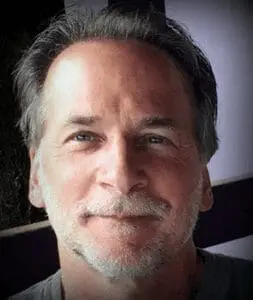The refrain, “counselors are on-site,” has become all too familiar in an age of tragic events that create lasting psychological wounds for those affected. Sending in mental health professionals to assist in the aftermath of everything from mass shootings to bombings to civil unrest to natural disasters marks a relatively new chapter in the repertoire of mental health treatment. If trained properly, these counselors are practicing psychological first aid (PFA) and providing a foundation that supports emotional resiliency. PFA is one aspect of what’s known as critical incident response (CIR).
The term psychological first aid dates back to World War II and was meant to address “war nerves” experienced by the Merchant Marines at sea. Since then, it’s become common language used by the field of behavioral health. According to the World Health Organization, PFA’s intent is to provide “humane, supportive, and practical help to fellow human beings who’ve suffered a serious crisis event.” There are various PFA models available today, but what they have in common, according to the International Critical Incident Stress Foundation (ICISF), is providing timely intervention to a critical incident— “any unusual event that has the power to overwhelm one’s usual coping strategies and elicit a psychological crisis where thoughts are impacted, and emotions become dominant.”
My work is to lessen the impact of those events. I’m a licensed therapist who’s been in the mental health field for almost 40 years. Ten years ago, I teamed up with an employee assistance program (EAP) where I was introduced to the world of CIR and soon after became a psychological first responder. Currently, I’m a clinical manager with Optima Health’s EAP, where I train both first responders and civilians in PFA. Much like a medical first responder, we answer calls to meet people who’ve been exposed to a critical incident to provide mental health support and triage. Those who experience these incidents are often in shock and stunned as they try to make sense of the event, often through tears, anger, or rage. In these moments, I often tell those I treat “you’re having a normal reaction to an abnormal event.” These words might be a psychological band-aid when the person will require much more extensive mental health treatment down the road, but it’s a vital reminder in moments when people are questioning the legitimacy of their responses.
Doing this work has been the most challenging—and rewarding—experience of my professional life. The outreach function of PFA sets it apart from working in a private practice office—and contributes greatly to its success. Whether it’s working with an individual or holding formal debriefings with groups, PFA work offers mental health practitioners an opportunity to move out of the office and take their skills to those in need.
As anyone who practices psychotherapy knows, the journey from intake to discharge often includes many twists and turns where both client and therapist can feel lost. In psychological first aid, however, the reason for and goals of the intervention, as well as the tools for working safely, are readily apparent. Therapists weary from private practice and looking to try something different often find comfort knowing the roadmap for PFA is clear, and they get professional satisfaction from doing a kind of work they say is often absent in traditional private practice.
In PFA we use what ICISF calls the PIE Model, which stands for proximity, immediacy, and expectancy. This model is the foundation of our response approach, and relies on taking services to those in need, providing those services within 24 to 72 hours of the event, and assuring those impacted that recovery is underway. We discuss exposure and its immediate impact with those we treat, normalize common stress reactions, and provide necessary support services information as well as immediate referrals to a higher level of care.
As both a provider and trainer of PFA, I’ve found that other mental health professionals often struggle to understand the work I do and its concepts. Many therapists find it hard to grasp that their role in PFA is to perform more of an emotional Heimlich maneuver than it is to take an in-depth look into why someone is choking. I’ve found there’s a tendency among many mental health professionals to jump into deep trauma work in the immediate aftermath of a critical incident, which often does a disservice to those impacted and leaves them dreading the recovery process ahead.
In the aftermath of the 2019 Virginia Beach mass shooting, in which I provided PFA, I felt it necessary to contradict a well-meaning but uninformed counselor. She’d been giving a presentation on the negative impacts of trauma and the consequences of not addressing symptoms to a group of workers who’d just left a memorial service honoring those who lost their lives. It was clear that her delivery was making them uncomfortable. That’s when I interjected and assured the workers that while they’d all experienced a traumatic event and might be experiencing post-traumatic stress, PFA has demonstrated that most if not all survivors will be able to heal using coping skills they’ve already developed. I added that participating in the memorial service was a part of their healing process.
Sometimes, the resistance is blunter. I frequently hear from fellow mental health professionals that not only does PFA not work, but that it can retraumatize and inhibit recovery. The arguments for this are thin at best, and at worst, are based on poorly conceived studies by those who’ve never practiced PFA.
After the January 6th attack on the Capitol, I was invited by a Virginia state police officer organization to provide PFA to Capitol police officers who’d experienced the trauma of the insurrection. I spent five days meeting with officers in Washington, DC, who, while still on duty in the empty halls of Congress, not only shared their stories about the events that had brought my team there, but eagerly shared personal and professional struggles and successes. On one of those days, I covered six miles walking around the Capitol grounds with other officers on our team, seeking out these brave men and women who, despite previous encounters with peer support specialists, were still grateful that we were concerned about their well-being.
To be clear, these encounters were not psychotherapy. I was not there to analyze, diagnose, or otherwise plumb the depths of their psyches. In fact, some of the most impactful moments were small but meaningful gestures that didn’t require a mental health background at all, like when I paid for an officer’s lunch. I’ll never forget when he sought me out later to thank me—and noted that the gesture was especially appreciated since it was Taco Tuesday. To my surprise, he remembered me when I returned later to work with the officers after a recruit was tragically killed when someone drove their car into a security checkpoint.
I must confess that this work is not for everyone. Much of CIR work takes place in the world of first responders, and what we see and hear can easily push even the most seasoned practitioner into the realm of secondary trauma. Being onsite after a mass shooting and walking past makeshift memorials in honor of the deceased tugs at heartstrings that I’d prefer be left alone. Still, the opportunity to experience the resiliency of the human heart and mind keeps me coming back.
I must add that as someone who’s spent almost 40 years in the mental health field, often struggling with burnout, compassion fatigue, and secondary post-traumatic stress, I seldom leave my work scratching my head in search of what I’ve just accomplished, wondering whether I’ve helped or hindered someone’s path to healing. For me and many other PFA workers, what we do is an antidote to those occupational hazards. I still vividly remember my first CIR assignment, at a worksite where an employee had died by suicide. I was only weeks out of cancer treatment, with the traditional chemo-fatigue, balding head, and radiation burns. But as I approached the site, the pride I felt in what I was doing swelled. In that moment, I thought to myself, This is why I survived cancer.
Time after time, I’ve encountered gratitude and appreciation for my work—more, in fact, than I have in any other job. The old psychotherapy adage of “be where they are” has never felt truer than when I’m helping people on their home turf.
Photo © iStock/Serdarbayraktar
Mike Verano
Mike Verano, LPC, LMFT, CEAP, CCISM, is a licensed therapist, certified employee assistance professional, certified approved instructor of critical incident stress management, a board certified telemental health professional, certified clinical trauma professional, and certified first responder counselor with over 30 years of experience in the mental health field. He’s also a cancer survivor and regular contributor to CURE magazine’s online blog.













